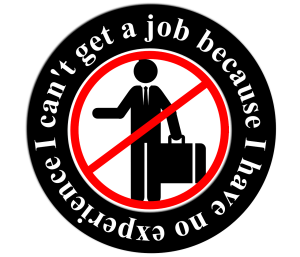
So, you’re looking for résumé writing tips. Naturally, you do what every sensible person in this day and age does. You get on Google. Except you’ve been on Google for 3 days straight now. You have clicked through hundreds of links and have been through about 4.369 trillion templates (give or take a few). Well, it doesn’t matter if you are part of the 7.8 million unemployed Americans or if you are looking to move up in the world of business because there is arguably only one correct format. But why should you trust us? Short answer, you shouldn’t; you should trust the research, though.
Before I just start pelting lists of things about what your résumé should be/have, first we should go over what a résumé is.
Résumé Writing Tip #1: Trust the research (find what works and use it)
What Makes a Résumé?
Mr. Manager needs employees. Accordingly, he puts out an advertisement for a job opening. You see this ad and you go in and drop off your résumé. But why should he pick you? Your face contorts and your brow lifts as you say “Because he’s hiring. Duh.”
Fair enough, but humor me for a second. As I stated before, there are 7.8 million unemployed people in America. Maybe, just maybe, there are other applicants that have applied. So, not only do you have to apply for jobs, but you also have to be better than the competition, maybe a lot of competition.
Experience
Your résumé is your highlight reel. It tells Mr. Manager why you deserve the job. But why do you deserve the job? Before you start on your résumé, do you know what you bring to the table? Start out by listing the experiences you have.
Your arms fly into the air in obdurate frustration “But I don’t have any experience. People aren’t hiring me because I don’t have experience and I can’t get experience because people aren’t hiring me!”
Funny how that works, huh? Even if you don’t think you have experience, don’t sweat it. Chances are, you have done much more than you think you have. Maybe you were a summer camp counselor or you were a group leader for some preschoolers you watched one day. Well, guess what? That’s leadership experience. That goes on you résumé. Don’t be shy about what you have accomplished either. Put that in there. Relevant coursework, additional training, volunteer work, and/or extracurricular activities? That goes in there too. See, we told you that you’ve done more than you think you have.
Résumé Writing Tip #2: Non-traditional experience can still be experience, and it belongs in your résumé
Formatting
Now that we have the experience content figured out, let’s move onto format. The majority of the research shows most hiring managers like to see traditional résumés that consist of a parallel construction with concise bulleted lists (Diaz, 429). Well, that’s fancy, but what does it mean? It means that your résumé has to be organized and pleasing to the eye. Basically, it shouldn’t be a jumbled mess of garbage.
Résumé Writing Tip #3: No out of the box designs or crazy formats (stick to the basics)
Résumé Writing Tip #4: Write with a parallel construction with concise bulleted lists
Data, Devil, Details

Hiring managers also analyze résumés in an F pattern as they sweep across the page (Nielsen, 2006). The most important information needs to be located at the top and along the left side of résumé. Your name and positions should be listed in large, bold font to catch the manager’s attention. Dates and locations aren’t as important and can, therefore, be minimized.
Keep in mind that Mr. Manager has to potentially review dozens or maybe even hundreds of résumés. As you can imagine, this is time-consuming. He isn’t going to read every single thing on your résumé. Specifically, it is the first eleven characters are the most important of every line (Nielsen, 2009). These are the characters most hiring managers read before deciding whether or not to finish the line or to move on to the next one. For this reason, you should try to start every line with a strong action verb and try to put the most important information in the first eleven characters.
Resume Writing Tip #5: Enlarge and bold your name and positions
Résumé Writing Tip #6: Put the best/most important information in the top left of the résumé
Résumé Writing Tip #7: Make every line count (first 11 characters)
Cover Letter
Though not technically part of your résumé, taking the time to create a customized cover letter or objective to match the job for which you are applying will help you stand out from the other candidates. However, there are caveats. For example, a cover letter or objective isn’t useful in a broad résumé, as it can narrow your search too much and turn off potential employers (Bennett, 339). If you decide to include one, it must be worded in a way that will relate your qualifications and experiences to the specific needs of the employer. If your cover letter isn’t targeted to a specific position, it doesn’t matter if your résumé is put together perfectly. It won’t receive the responses you want and that won’t get you your dream job.
Résumé Writing Tip #8: In your cover letter or objective, be specific to what is asked for and described in the job listing
We have helped clients with a diverse set of backgrounds, including high-level executives and CEOs. We have a 93% client success rate (interviews landed and jobs secured) and a 98% client satisfaction rate. Our writers have over 20 years of experience in numerous fields and have written over 100,000 résumés.
Hopefully, these résumé writing tips have helped you. If you have any questions or are interested in our assistance while you’re writing, follow the link below to speak with an expert today:
Sincerely,
Respected Résumés
Citations & Sources for Résumé Writing Tips
Bennet, S. (2005). The Elements of Résumé Style: Essential Rules and Eye-opening Advice for Writing Résumés and Cover Letters That Work. Business Communication Quarterly. 69. 339-354.
Diaz, C. S. (2013). Updating Best Practices: Applying On-Screen Reading Strategies to Résumé Writing. Business Communication Quarterly, 76, 427-443.
Nielsen, J. (2006, April 17). F-shaped pattern for reading web content.
Nielsen, J. (2009, April 6). First 2 words: A signal for the scanning eye.

